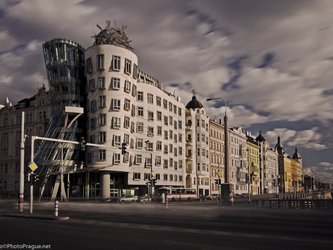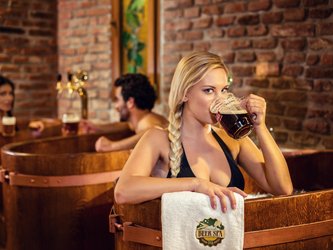Jungmannovo Square (Jungmannovo náměstí) is an intimate space in the heart of the city with remarkably multi-layered architectural history. In the 13th century, this was one of the many historical crossroads in front of the Old Town walls. It gained prominence with the founding of the New Town in 1348. Emperor Charles IV had big plans for the crossroads. The whole space was to be dominated by the Church of Our Lady of the Snows, whose size and height would outdo St. Vitus Cathedral and would thus form the backdrop to today’s Národní třída. In the end, only a part of the church was built, and of this, only the high choir was left at the end of the Hussite wars. Even today, though, we can imagine the dimensions of the planned church: archaeological research has shown that the front of the church would have been in the place where the statue of Josef Jungmann stands today. The reign of Charles IV is also associated with the founding of the neighbouring Franciscan Gardens, which, as if by miracle, still survive to this day. The entrance to the former Gothic gardens is in a corner of the Square and is so inconspicuous that only those who know about the hidden gardens can find them.
The Square underwent a significant change in the 20th century. In view of the rising importance of bulwarks on the ramparts, the quiet little square found itself at the epicentre of the development of modern Prague. The key urbanist event was the building of the statue of Josef Jungmann, who was a major figure in the Czech National Revival. This event transformed the little square into a full-fledged metropolitan space which would eventually sport major structures on its perimeter.
The buildings in the square and its vicinity are a fascinating example of the dynamic architectural metamorphoses during the early decades of the 20th century. The Neo-Baroque building at the head of Národní třída shows the confidence and taste of the rich burghers, who around 1900 looked to Vienna and Paris for inspiration for their buildings. The slightly younger austere brick Mozateum building by the founder of Czech modern architecture, Jan Kotěra, which is on Jungmanova Street is one of the major examples of the birth of local modern architecture. On the other hand, the sculptural stone facade of the Adria Palace is a curious case in the search for a “national style“, following the founding of Czechoslovakia in 1918. And finally, the ARA Palace (formerly Perla Department Store) situated at the corner and built between the 1920s and 1930s, marks the final victory of Functionalism, which became synonymous with inter-war progress and democracy.






